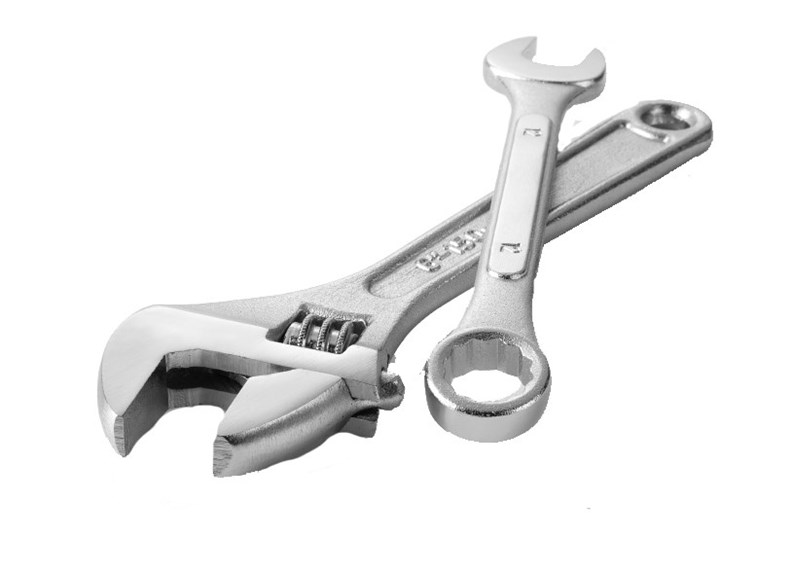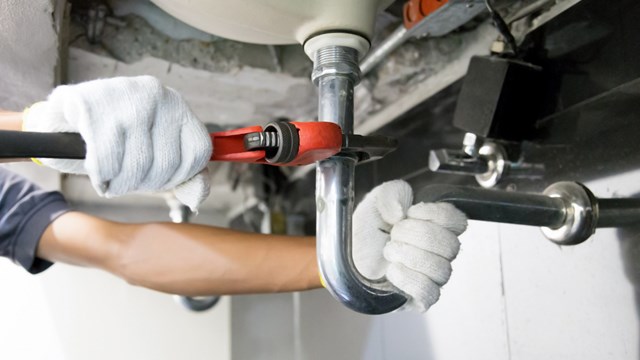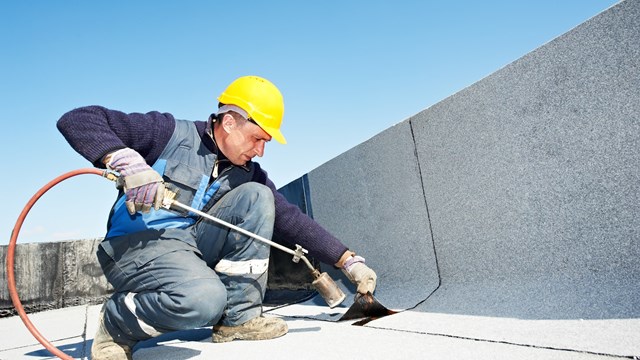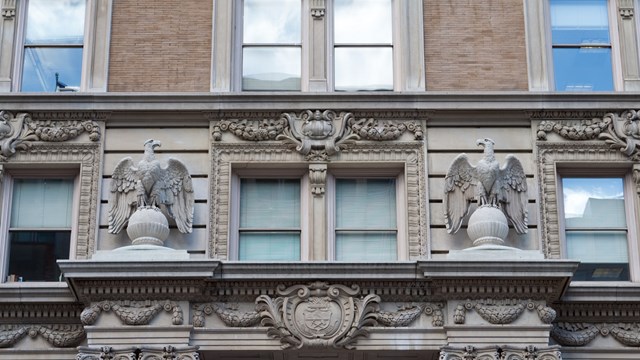In many ways, a building is like the human body: If you want it to function properly over the long haul, you have to take care of it with clean fuel, regular maintenance, and the occasional visit to a specialist. And like a body's vital organs, a building's systems are integrated and reliant upon each other to function properly, so it's important to know the basics of how the various systems operate. It also means being able to recognize potential problems early so that they don't develop into something major.
Few parts of a residential building are as important as the roof - it helps maintain the temperature in the building no matter what the thermometer reading says, protects its contents from the ravages of leaks and water damage, and literally keeps the rain off residents' heads. A neglected roof is a liability - it hemorrhages money in the form of constant stopgap repair work, damage to property, and even legal action brought by angry shareholders.
Even with conscientious care and maintenance, however, roofs can be tricky things. As one contractor puts it, "There are two types of flat roofs: the ones that leak, and the ones that will leak." The reasons for this are manifold; unlike pitched roofs, flat roofs - like the vast majority of those found in New York City - are subject to the weight of snow in the winter, big puddles of standing water after rainy weather, direct sunlight nearly every day, damage from residents walking on them, construction debris, and a host of other potential threats.
"Roofs can be punctured or disrupted fairly easily, says R. Neal Eisenberg, preservation and restoration consultant to Garden State Commercial Services, with offices in Manhattan and Bayonne, New Jersey. "Some roof materials can be disrupted by the weight of a footprint."
Most roofs in the city are made up of several different types of material layered together like the different levels of a person's skin. Those materials usually include a substructure of steel under a concrete deck, topped with a "vapor barrier" like tarred paper. Over that goes a layer of insulation several inches thick, which is in turn topped by a waterproof membrane - and a decorative decking material, in some cases.
The waterproof membrane functions much like the skin's epidermis, serving as the first - though by no means impenetrable - line of defense against the outside environment. Unlike our skin, however, roofs can only be expected to last between 10 and 25 years.
"There's not really one best material or procedure out there," says Eisenberg, but the waterproofing layer is usually either a liquid preparation spread evenly over the surface of the roof, or in a prefabricated sheet that is rolled out across the surface and tacked down around the edges. Liquid membranes are usually coal-tar-based materials - like asphalt - and are usually pumped up to the roof from a "kettle" on the ground to avoid igniting any flammable materials up on the roof itself. Sheet membranes are also asphalt-based, but come reinforced with fiberglass or polyester filaments, and are rolled out and glued to the roof deck with special heavy-duty adhesive.
For buildings wishing to use their roof space as an amenity for residents, says Eisenberg, "The so-called "˜upside-down' roof is popular. In this model, the roof membrane is applied directly to the [concrete] deck, with the insulation board and gravel (or another stone substance more appropriate for walking on) put on top of the membrane. The biggest problem with fixing leaks in upside-down roofs is finding the leak in the first place, since the roof membrane - usually the layer of the roof exposed to the air - is buried."
Another important component of a building's roof is drainage. With a pitched roof, water, debris, and other materials roll down the sloped sides into the gutters, and from there are conveyed to the ground, away from the building itself.
Flat roofs are another matter, says Eisenberg. Pooled water - whether from precipitation, construction, or recreation - can have disastrous effects on a building's roof if it doesn't have a place to drain. Thin metal flashing is installed along any seams or joints on the surface of a roof - along parapet walls, around vents and pipes, and any other machinery - to redirect water away from the roof, and drains, scuppers, and downspouts do their part as well. Water also can find its way in along the roof copings and the mortar joints of the building.
"On the roof of the building you usually have water tanks, cooling towers, fan housings, stair bulkheads, and elevator bulkheads," according to architect Howard L. Zimmerman, founder and president of Howard L. Zimmerman Architects, P.C. in Manhattan. "All of those things penetrate the roof, and any penetration of the roof is a source of potential water infiltration."
Eisenberg remembers a case in which a building went to a great deal of effort and expense to install built-in ceramic planters on the roof for the enjoyment of the residents. Unfortunately, drainage was not something that made it into the planning phases of the project, and whenever the plants were watered, muddy runoff from the planters seeped into the building, causing extensive damage to the top-floor apartments and infuriating the occupants.
And there's still more, says Zimmerman. "Another major roof component are the parapets. That's the wall that rises three feet, six inches above the level of the roof. It's there to give proportion to the building, but it's one of the most vulnerable components of a building because it is exposed on three sides - on the outside, the inside and from the top - and thus subject to weather. It's sucking in water and taking in sunshine and cooling and heating on three sides, whereas the façade only takes it in on one side. That exposure makes it very vulnerable and costly to repair."
And the parapet wall is also the upper edge of another major building component: the façade. That's the front of the building - the face it shows to the world. "The façade is exactly what the word says," says Zimmerman. "It's a façade; a skin. It's separate from the roof and from the main structure. In the old days, facades were load-bearing, meaning they supported the building. But that stopped in the early 1900s. In most buildings now, the façade is really just that - it's a skin of a building that is there to keep the heat and air conditioning in and keep the weather out, and add decoration. It's of little or no value in supporting the building, but it is a major cost of maintaining the building."
Under the skin of a building is a teeming network of systems that work together to accomplish an impressive array of tasks. Chief among these internal systems is the building's electrical wiring, which - along with gas and heating oil - is the spark that starts up all a building's mechanical components and keeps them running. The easy availability and relative affordability of electric lights and equipment is something we take for granted in our part of the world (until there's a major blackout like the one in August of 2003, of course).
A building's electrical system is like the nervous system of the human body: it delivers electricity to all the other parts, keeping them lit and running consistently. In New York, according to Peter Varsalona, a professional engineer and principal of Rand Engineering & Architecture, PC in Manhattan, power to residential buildings is supplied by Con Edison. Con Ed's main service feeders enter a building through what's called a property line or end box, which is the beginning point of the building's electrical system. Main conductors extend from the end box via a conduit or wireways to service switches, which then provide power to panel boards, equipment load centers, and meter banks throughout the building.
In some cases, Varsalona continues, a master meter is in place to measure the amount of electricity being used in the building as a whole. Residents pay the cost of the electricity they use as part of their monthly maintenance charges. In buildings that are considered "submetered," individual meters for each apartment allow residents to pay their electric bill directly to the utility company.
From the meter banks or panel boards, common or individual electrical risers bring service up to either a line of apartments, or to individual units, respectively. In the case of common line risers, branch feeders connect the risers to each apartment panel. In either case, electricity is delivered to a fuse box or circuit breaker panel in each apartment, upon which the electrical supply is carried to separate circuits that supply the power to outlets and lights.
"New York City's building code specifies three types of electrical loads," Varsalona continues. "A lighting and general receptacle load (for residences, three watts per square foot), an appliance load (usually 1,500 watts per appliance circuit), and an air-conditioning load (the minimum circuit capacity is provided by the manufacturer). Current usage and requirements for reasonable future demands are often calculated as well. The load capacity for all the apartments and common areas are totaled and compared to the building's existing load capacity to determine whether an electrical upgrade is necessary. If the demand load outstrips capacity, then the main power into the building will eventually need to be increased."
Most newer buildings were designed with electrical capacity distributed fairly equally among apartments, based on unit size. A studio or one-bedroom apartment, for example, may have 40 amps or more. For many residents, however, the existing power supply to their apartments is inadequate for their needs. Heavy-duty appliances - such as air conditioners, electric dryers, and electric stoves and ovens, for example - as well as electric heating and central air conditioning, all require more electrical capacity than the standard amount provided in most systems.
"To determine the electrical capacity required for each apartment," says Varsalona, "an engineer calculates the power load based on square footage and expected usage in accordance with the National Electrical Code (NEC). If residents plan to ad heavy-duty appliances or extra lighting that will increase their electrical needs, then that anticipated power usage should be included in the calculation. The higher the demand load, the less "˜spare' power available."
If the electrical system is a building's nervous system, the HVAC is its circulatory and respiratory system. Clean air in a building is every bit as important as clean air in a person's lungs; it's both unpleasant and unhealthy to live in a stale, stuffy home. In light of this, buildings have to meet clean-air standards - though they aren't required to have their air ducts cleaned or routinely inspected, according to Craig Berlin of Chute Master Indoor Environmental in Union, New Jersey. Berlin says that unlike trash chutes - which should be cleaned on an annual basis - air ducts are usually cleaned every two or three years, and adds that as with some plumbing matters, the actions of individual tenants can affect the air flow of a building. Even changing an apartment's configuration can cause problems. We've seen situations where people cut into a wall and inadvertently cut into an air duct, which can cut the flow from all the floors above it and change the dynamic of the building. We've even seen people store things in the air ducts."
And Berlin says that air issues aren't just something that affect older structures. "You would think newer buildings wouldn't have problem, but many do because energy efficient buildings are sealed so tight that there's no air flow. It's not uncommon for a building to undergo a major renovation where they put in new windows and they don't address the air duct system. The entire balance of the building has changed considerably because it's sealed too tight."
Berlin adds that cleaning out neglected ductwork is something boards can't afford not to do. "To clean two air vents in an apartment and keep that apartment's air flow good, it could be $30 every three years. Once people hear that, they can't believe they haven't been having it done. Many of the buildings we clean, haven't been cleaned in 40 or 50 years - or they've never been cleaned."
Another component of a building's anatomy is also related to circulation. We all need water to live, and a smooth and efficient plumbing system is necessary for the delivery and disposal of both clean and waste water - along with other fluids and fluid wastes. Most buildings use what is referred to as a sanitary plumbing and drainage system, wherein water from the municipal water supply is brought into and distributed throughout the building via a system of pipes by gravity and water pressure. In residential buildings, these pipes are usually made of durable copper and stainless steel piping.
According to building superintendent Peter Grech, domestic water typically enters the building from the street to the building's main water line where it then enters a device called a back flow preventer. This prevents the water from flowing back into the street system. The water then enters a header - a large pipe system in the basement that branches off into risers - which run vertically throughout the building supplying water to a line of apartments. In high-rise building above six stories, water would be distributed throughout the building via a water pump system or a series of pumps located either in the basement or on the roof. A roof tank serves as storage for domestic water and as standpipe water for firefighting.
When it comes to plumbing in apartments, Collins says, "Leaks are going to happen," he says, and adds that an inspection from a plumber may come in very handy when units are being worked on by contractors. One of the more common problems, he notes, is using unlicensed or inexperienced contractors. In that case, it's wise to have a licensed plumber inspect the work to make sure everything is up to code and stave off future problems.
Powerful equipment is necessary to move all this air and heat through a building, of course, and at the heart of every multifamily building are two major system components: the HVAC equipment, and the boiler.
HVAC is the umbrella term for the system that includes all the equipment used to ventilate, heat and cool the building, move the air through the ductwork, and have that air filtered and clean for the occupants. According to the Environmental Protection Agency (EPA) (www.epa.gov), not all HVAC systems are designed to accomplish all those functions, however - most HVAC systems actually contain other, smaller components that are major systems in and of themselves. Some buildings rely just on natural ventilation, others don't have central air conditioning to keep things cool, and others don't do anything to control humidity.
The features a given building's HVAC system has depends on a number of variables but some components are more or less universal. The basic components of an HVAC system are an outdoor air intake, mixed-air and outdoor air controls, an air filter, heating and cooling coils, humidification or de-humidification equipment, supply fans, ducts, a terminal device, a return air system, exhaust or relief fans, self-contained heating and cooling units, a control panel, the boiler, water chiller and cooling tower.
HVAC systems can be stand-alone units that serve individual rooms to huge, centrally controlled systems that serve the entire building. Most HVAC systems are built along one of four models: single-zone, multiple-zone, constant volume, and variable volume.
Single-zone systems are meant to do what their name suggests: heat or cool the air in one particular area of a building; one regulated by a common thermostat. Multiple-zone systems can provide many different zones with different heating or cooling needs by heating or cooling the airstream in each zone. Constant volume systems generally are designed to deliver a constant airflow to each space. The temperature in a room or zone is changed by heating or cooling the air, or by switching the air-handling unit on and off - not by changing the volume of air. And variable volume systems maintain comfortable temperatures by varying the amount of heated or cooled air delivered to each zone, rather than by changing the air temperature.
Any discussion of heating a building can't just stop with the generic term "HVAC" however. The warmth has to come from somewhere. A building's heating system is a major component that interlocks with the ventilation system to keep residents both comfortable and healthy and to protect temperature-sensitive plumbing and ductwork.
Generally, buildings are heated through a boiler, which is literally the beating heart of the structure, burning oil or gas to generate heat. The oil or gas is ignited in a combustion chamber of the boiler so that it produces hot gasses. Those gasses pass through metal tubes, heating water on the other side. The result is steam, which rises through the pipes to a radiator. Fire tube boilers are the most common in New York for residential buildings.
The boiler or hot water heater is also involved in the production of hot water. Here the water will go into the boiler where it will be heated to a desired temperature by a heat source - usually a boiler with internal coils; or one with external coils, known as a heat exchanger. The water is then heated by steam and spread throughout the building. In buildings above six stories, Grech explains that the cold water is distributed from the roof tank to a return hot water header, and then into the boiler. From there it goes through a separate riser for distribution throughout the building.
And speaking of ventilation and temperature control, one of the biggest problems buildings have this time of year is with steam, according to Vinny Collins of Pro-Tech Plumbing in Whitestone.
"Most prewar buildings are going to have a problem with uneven steam distribution when the winter hits," Collins says. "Some apartments will get plenty of steam - maybe even too much - and others won't get enough." An engineer can evaluate the situation in your building and inform you as to how to repair it.
Burning fossil fuels for heat and hot water comes with its own set of maintenance challenges. "As hot gasses are passing through the tubes, they're also bringing smoke and soot with them," says Michael Costelloe of Teitelbaum Inc. in Queens. "The soot - which is really unburned fuel - accumulates on the inside wall of the tube and acts as an [unwanted] insulator."
Also remember that the pipes leading from the boiler room to the apartments must be well insulated. If they're not, Costelloe says, "That's not good for a few reasons: First, you're losing the heat in the boiler room that should be getting into the apartment. Also, as that steam is rising, it's automatically starting to cool. That means you have a condensation problem before it even gets to the radiator. When steam hits liquid water, it bangs - it's called a "˜water hammer,' and that's what you're hearing when the pipes rattle. It sounds like someone is hitting the side of the pipe with a hammer."
In order to be certain that your boiler is working properly throughout the year, Costelloe recommends a major cleaning in the spring or summer and supplemental cleanings - which entail vacuuming the tubes as well - once a month during the winter months.
Vacuuming the tubes requires going into the combustion chamber. "Not only do we go in there and clean that out, it also gives the opportunity for the superintendent to check the refractory," Costelloe says. The refractory is the heat-insulating material, such as firebrick or plastic fire clay that lines the chamber. "As time goes on because of heat, the bricks start to break apart. Major cleanings allow the opportunity to do a visual inspection to see how the brick is doing."
Most of us try to take care of ourselves and our overall good health. We know that by watching what we eat, getting plenty of exercise, and going in for regular check-ups with our health care professional, we can live longer, healthier lives. Investing in the upkeep of the buildings has a similar effect: our homes will last longer and give us both shelter and pleasure for many years to come.
"And all things are constructed separately," says Zimmerman. "When they build a building, first they build the frame out of the ground, and that's called the skeleton. Then they put the skin on, then they put the roof on, and then they build out the interiors. Everything is dependent on each other but everything is independent of each other also."







Leave a Comment